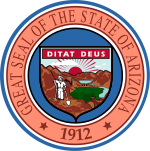
Sidney Preston Osborn was an American politician who was the first secretary of state of Arizona, and later the seventh governor of Arizona and is, as of 2025, the only governor of Arizona to be elected to four consecutive terms. Osborn is also the second native-born governor of Arizona, preceded by Thomas Edward Campbell.

The 1964 United States Senate elections were held on November 3. The 33 seats of Class 1 were contested in regular elections. Special elections were also held to fill vacancies. They coincided with the election of President Lyndon B. Johnson by an overwhelming majority, to a full term. His Democratic Party picked up a net two seats from the Republicans. As of 2023, this was the last time either party has had a two-thirds majority in the Senate, which allowed the Senate Democrats to override a veto, propose constitutional amendments, or convict and expel certain officials without any votes from Senate Republicans. However, internal divisions would have prevented the Democrats from having done so. The Senate election cycle coincided with Democratic gains in the House in the same year.

The 1912–13 United States Senate elections were held on various dates in various states. They were the last U.S. Senate elections before the ratification of the Seventeenth Amendment in 1913, establishing direct elections for all Senate seats. Senators had been primarily chosen by state legislatures. Senators were elected over a wide range of time throughout 1912 and 1913, and a seat may have been filled months late or remained vacant due to legislative deadlock. Some states elected their senators directly even before passage of Seventeenth Amendment. Oregon pioneered direct election and experimented with different measures over several years until it succeeded in 1907. Soon after, Nebraska followed suit and laid the foundation for other states to adopt measures reflecting the people's will. By 1912, as many as 29 states elected senators either as nominees of their party's primary or in conjunction with a general election.
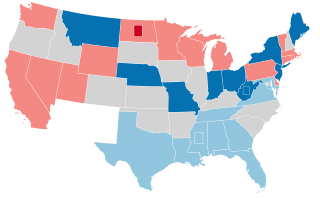
The 1910–11 United States Senate election were held on various dates in various states. As these U.S. Senate elections were prior to the ratification of the Seventeenth Amendment in 1913, senators were primarily chosen by state legislatures. Senators were elected over a wide range of time throughout 1910 and 1911, and a seat may have been filled months late or remained vacant due to legislative deadlock. However, some states had already begun direct elections during this time. Oregon pioneered direct election and experimented with different measures over several years until it succeeded in 1907. Soon after, Nebraska followed suit and laid the foundation for other states to adopt measures reflecting the people's will. By 1912, as many as 29 states elected senators either as nominees of their party's primary or in conjunction with a general election.

The 1976 United States Senate election in California took place on November 2, 1976. Incumbent Democratic U.S. Senator John V. Tunney ran for re-election to a second term, but was defeated by Republican S. I. Hayakawa. As of 2024, this is the last time an incumbent Democratic Senator from California lost re-election.

The 1932 United States Senate elections in Arizona took place on November 8, 1932. Incumbent Democratic U.S. Senator Carl Hayden ran for reelection to a second term, again defeating his 1926 challenger former U.S. Senator Ralph H. Cameron in the general election.

The 1952 United States Senate election in Arizona was held on November 4, 1952. Incumbent Democratic U.S. Senator and Senate Majority Leader Ernest McFarland ran for re-election to a third term, but was defeated by the Republican nominee and future candidate for President of the United States, Barry Goldwater.

The 1922 United States Senate elections in Arizona took place on November 7, 1922. Incumbent Democratic U.S. Senator Henry F. Ashurst ran for reelection to a third term, defeating Republican nominee James H. McClintock in the general election by a wide margin.

The 1928 United States Senate elections in Arizona took place on November 6, 1928. Incumbent Democratic U.S. Senator Henry F. Ashurst ran for reelection to a fourth term, defeating Republican nominee former U.S. Senator Ralph H. Cameron in the general election. Cameron was defeated in the previous election year, in 1926, by then-U.S. Congressman Carl T. Hayden, leading Cameron to decide to challenge Ashurst in order to return to the United States Senate.

The 1934 United States Senate elections in Arizona took place on November 3, 1934. Incumbent Democratic U.S. Senator Henry F. Ashurst ran for reelection to a fifth term, defeating Republican nominee Joseph Edward Thompson in the general election by a wide margin.

The 1940 United States Senate elections in Arizona took place on November 5, 1940. Incumbent Democratic U.S. Senator Henry F. Ashurst ran for reelection to a sixth term, but was defeated in the Democratic primary to challenger Ernest McFarland.
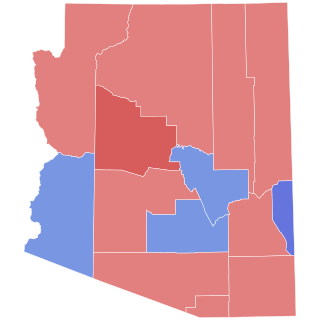
The 1958 United States Senate election in Arizona took place on November 4, 1958. Incumbent Republican U.S. Senator Barry Goldwater ran for reelection to a second term, and defeated former U.S. Senator, and then-Governor, Ernest McFarland in the general election. The election was a rematch from 1952, where Goldwater defeated McFarland by a narrow margin. Goldwater had attributed the 1952 win to the unpopularity of President Harry S. Truman and popular Wisconsin Senator Joseph McCarthy endorsing his campaign.
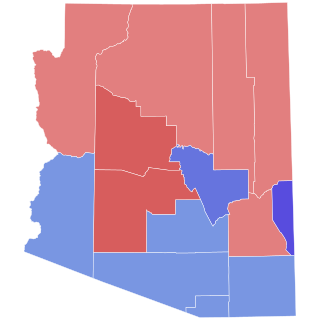
The 1970 United States Senate election in Arizona took place on November 3, 1970. Incumbent Republican U.S. Senator Paul Fannin decided to run for reelection to a second term, running unopposed in the Republican primary. Fannin defeated Democratic nominee Sam Grossman in the general election. This was the last time until 1994 that Republicans won Arizona's Class 1 Senate Seat.

The 1920 United States Senate election in Arizona took place on November 2, 1920. Incumbent Democratic U.S. Senator Marcus A. Smith ran for reelection to a third term, but was defeated by former Delegate to the U.S. House of Representatives from the Arizona Territory Ralph H. Cameron in the general election. Cameron would become the first Republican elected to the office of U.S. Senator from Arizona since the state joined the union in 1912. The same year, Republican Governor Thomas Edward Campbell was reelected to a second term.
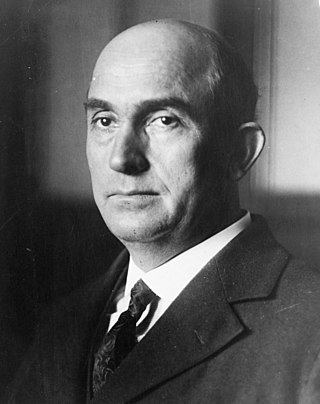
The 1938 United States Senate elections in Arizona took place on November 3, 1938. Incumbent Democratic U.S. Senator Carl Hayden ran for reelection to a third term, defeating Republican nominee Burt H. Clingan in the general election.
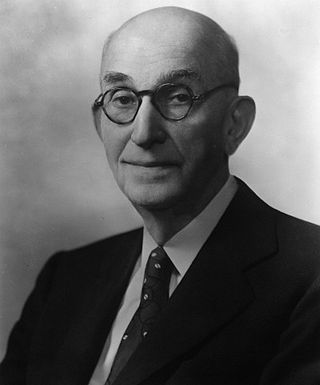
The 1956 United States Senate election in Arizona took place on November 6, 1956. Incumbent Democratic U.S. Senator Carl Hayden ran for reelection to a sixth term, defeating Republican nominee Attorney General of Arizona Ross F. Jones in the general election.

The 1950 United States Senate elections in Arizona took place on November 7, 1950. Incumbent Democratic U.S. Senator Carl Hayden ran for reelection to a fifth term, defeating Republican nominee Bruce Brockett in the general election. Brockett was formerly the Republican nominee for governor in both 1946 and 1948.

The 1962 United States Senate election in Arizona took place on November 6, 1962. Incumbent Democratic U.S. Senator Carl Hayden ran for reelection to a seventh term, defeating Republican State Senator Evan Mecham in the general election. Mecham became Governor of Arizona more than two decades later, and was subsequently impeached and removed from office.
The 1912 United States Senate elections in Arizona took place in the Arizona State Legislature on March 27, 1912, confirming the selection of Marcus A. Smith and Henry F. Ashurst as the state's first U.S. Senators. Their results were predetermined on the basis on the results of a popular vote taken on December 12, 1911.

The 1916 United States Senate election in Maryland was held on November 7, 1916.

